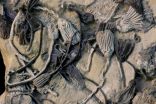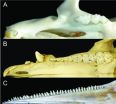(Press-News.org) An expansion of collaborative projects involving Fundación Santa Fe de Bogotá (FSFB), one of Colombia's premier health care institutions, and Johns Hopkins Medicine International (JHI) will continue for another 10 years under an agreement signed Feb. 18, 2013, in Baltimore, USA. The collaboration agreement detailing joint efforts in research and nursing, among other areas, was signed by Steven J. Thompson, chief executive officer of JHI, and Juan Pablo Uribe, chief executive officer of FSFB.
"It is a privilege to have the opportunity to strengthen our collaboration with one of Colombia's most prestigious medical institutions as it expands its clinical and research work," says Thompson. "We are especially delighted that research projects and nursing initiatives will be at the core of this work. We are proud to be part of FSFB's efforts to enhance health care delivery, patient safety and education in the region."
The two health care leaders' initial collaboration agreement, signed in 2011, focused on training and clinical services programs. Under the new, 10-year agreement, Johns Hopkins Medicine faculty and experts will share their expertise to enhance FSFB's emergency department, physician training, leadership initiatives for nurses and hospital expansion. The relationship will provide opportunities for joint research in intensive care and urology. Facilities design, patient safety, and quality improvement projects will also be emphasized.
Additionally, Johns Hopkins Medicine faculty and experts will participate in FSFB's visiting professorship program and host observerships and joint symposia for physicians and health care leaders.
"Our collaboration with JHI is a source of great pride and promise for FSFB as we strive to improve health in Colombia," says Uribe. "Like our colleagues at Johns Hopkins, we are committed to providing outstanding, safe patient care, and to educating and training the next generation of Colombian health care leaders. We are confident that this active knowledge exchange will help us strengthen our mission of being one of Latin America's most respected health care institutions."
Fundación Santa Fe de Bogotá, founded in 1972, is a private, not-for-profit organization. It owns the 205-bed University Hospital, the first Joint Commission International-accredited hospital in Bogotá and second in the country. In addition, FSFB provides undergraduate and graduate medical training, performs research projects and conducts public health programs in cooperation with the Universidad de los Andes.
###
About Johns Hopkins Medicine
Johns Hopkins Medicine unites the physicians and scientists of the Johns Hopkins University School of Medicine with the organizations, health professionals and facilities of the Johns Hopkins Health System. The mission of Johns Hopkins Medicine is to improve the health of the community and the world by setting the standard of excellence in medical education, research and clinical care. Diverse and inclusive, Johns Hopkins Medicine has provided international leadership in the education of physicians and medical scientists in biomedical research and in the application of medical knowledge to sustain health since The Johns Hopkins Hospital opened in 1889.
About Johns Hopkins Medicine International
Johns Hopkins Medicine International (JHI) facilitates the global expansion of the Johns Hopkins Medicine mission: to improve the health of the community and the world by setting the standard of excellence in medical education, research and clinical care. JHI provides personalized, culturally appropriate care for patients traveling from outside Maryland and the United States, and for local patients with limited English proficiency. JHI also leverages Hopkins' extensive knowledge base in medicine, nursing, public health, business and health care administration to provide services in hospital management, health care consulting and clinical education through strategic alliances and affiliations throughout the world.
About Fundación Santa Fe de Bogotá (FSFB)
FSFB is one of the leading health care institutions in Colombia. Founded in 1972 in Bogotá as a private not-for-profit organization with no owners and shareholders, all net profit is reinvested in FSFB's human and capital development. FSFB is also affiliated with the Universidad de los Andes, one of the best private universities in Colombia and leading medical school. FSFB's teaching hospital, one of six units, was the first Joint Commission International-accredited hospital in Bogotá and the second in the country. In addition to the clinical activities in the hospital, FSFB provides undergraduate and graduate medical training, conducts health research projects and implements public health programs. Since its creation, FSFB has been committed to offering the highest quality of care to its patients and families. Its ethical standards, forefront in technology, complex procedures, research and education opportunities have gained FSFB recognition in Colombia and internationally.
Johns Hopkins Medicine and Fundación Santa Fe de Bogotá collaboration to focus on research, nursing
2013-02-19
ELSE PRESS RELEASES FROM THIS DATE:
Ancient fossilized sea creatures yield oldest biomolecules isolated directly from a fossil
2013-02-19
COLUMBUS, Ohio—Though scientists have long believed that complex organic molecules couldn't survive fossilization, some 350-million-year-old remains of aquatic sea creatures uncovered in Ohio, Indiana, and Iowa have challenged that assumption.
The spindly animals with feathery arms—called crinoids, but better known today by the plant-like name "sea lily"—appear to have been buried alive in storms during the Carboniferous Period, when North America was covered with vast inland seas. Buried quickly and isolated from the water above by layers of fine-grained sediment, their ...
It's off to work we go
2013-02-19
This press release is available in French.
Montreal, February 18, 2013 – In a large city like Montreal, public transit provides us with options for getting to work or school and back home again. In deciding to choose traffic jams over metro delays, or to pay for parking rather than buy a monthly pass, you weigh the pros, cons and costs of your options, and your mental calculations are more complicated than they may appear at first glance.
In a paper recently published in The Journal of Transportation and Land Use, Zachary Patterson, an assistant professor in Concordia ...
Solar sponge' soaks up CO₂ emissions
2013-02-19
CSIRO scientists have created a 'solar sponge' which captures and then releases carbon dioxide using the power of natural sunlight.
The breakthrough presents a new way to recycle CO2 emissions using renewable energy. The 'sponge' which is made from a new smart material called a MOF - metal organic framework - adsorbs carbon dioxide, but when exposed to sunlight, instantaneously releases it.
Known as dynamic photo-switching, this capture-and-release method is extremely energy efficient and only requires UV light to trigger the release of CO2 after it has been captured ...
New evidence for link between depression and heart disease
2013-02-19
MAYWOOD, Il. - A Loyola University Medical Center psychiatrist is proposing a new subspecialty to diagnose and treat patients who suffer both depression and heart disease. He's calling it "Psychocardiology."
In his most recent study, Angelos Halaris, MD, PhD, and colleagues found that an inflammatory biomarker, interleukin-6, was significantly higher in the blood of 48 patients diagnosed with major depression than it was in 20 healthy controls. Interleukin-6 has been associated with cardiovascular disease. Halaris presented findings at a joint congress of the World Psychiatric ...
In fight against cancer, a closer look at nuclear blebbing
2013-02-19
Misshapen cell nuclei are frequently observed in the cells of people with cancer and other diseases, but what causes the abnormality -- and why it is associated with certain disorders -- has remained unclear.
Researchers at Northwestern University have recently developed a mathematical model that sheds light on the defect by clarifying the mechanisms that cause bulges known as "blebs" in cells' nuclear membranes. The research -- a collaboration between experts at the McCormick School of Engineering and Applied Science and the Feinberg School of Medicine -- could be a ...
Nesting site protection 'key to save turtles from climate change'
2013-02-19
International marine scientists today warned it will be vital to protect key marine turtle nesting grounds and areas that may be suitable for turtle nesting in the future to ensure that the marine reptiles have a better chance of withstanding climate change.
A new study reveals that some turtle populations in the West Indian Ocean, Northeast Indian Ocean, North Pacific Ocean, East Atlantic Ocean and the East Pacific Ocean are among the least likely to recover from the impacts of climate change. Mariana_19feb_2
"To give marine turtles a better chance of coping with climate ...
5-ALA fluorescence guides resection of recurrent glioblastoma multiforme
2013-02-19
Charlottesville, VA, February 19, 2013. Neurosurgeons from UC San Francisco describe the use of 5-aminolevulinic acid (5-ALA) fluorescence in guiding resection of recurrent glioblastoma multiforme (GBM). Ingestion of 5-ALA by a patient before surgery leads to fluorescence of tumor cells intraoperatively in response to certain wavelengths of light. This can provide information not necessarily available through magnetic resonance imaging (MRI), the standard mode of imaging used to detect primary and recurrent GBMs. The additional information provided by 5-ALA fluorescence ...
How the whale got its teeth
2013-02-19
Whales are mammals, but they don't look like the mammals living around us, as they have a triangular fluke for tail, no hind legs and no body hair. And inside their mouths, their teeth are unfamiliar too – being much simpler and 'peg like'. A multidisciplinary team of researchers have now married together the fossil record and the embryonic development process to investigate how the whale got its teeth.
Most mammals have four kinds of teeth, each shaped for specific tasks. In most mammals there are wedge-shaped incisors, a pointy canine, and premolars and molars with ...
Stillbirth in Inuit and First Nations women higher than for non-Aboriginal residents
2013-02-19
Stillbirth rates in First Nations and Inuit populations in Quebec are higher than in the general population, especially in late gestation and at term, found a new study in CMAJ (Canadian Medical Association Journal).
"Aboriginal populations in Canada [First Nations and Inuit] rank at the top of the list of disadvantaged groups with the highest rates of stillbirth in the Western world," writes Dr. Nathalie Auger, Institut national de santé publique du Québec, with coauthors. Rates are 2 times those of the non-Aboriginal population.
Researchers looked at data on 9983 ...
Unplanned hospitalization more likely in people with several illnesses, mental health conditions
2013-02-19
People with multiple illnesses are much more likely to be admitted to hospital unexpectedly, and mental health issues and economic hardship further increase the likelihood, according to a study in CMAJ (Canadian Medical Association Journal).
"We provide strong evidence that physical multimorbidity substantially affects the use of acute hospital services, including admissions considered potentially preventable through management of optimal primary care," writes Dr. Rupert Payne, Cambridge Centre for Health Services Research, University of Cambridge, Cambridge, United Kingdom. ...

